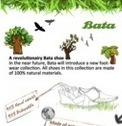
A study by the United Nations Environmental Program reports that only 4% of consumers actually buy sustainable products, this is in stark contrast with the 40% who stated that they were willing to buy more sustainable products. Other research sometimes report even higher percentages. The Natural Marketing Institute published that, although 16% of the consumers indicate that they are willing to pay 20% more for a product that is produced in a sustainable and environmentally friendly way in reality even fewer consumers deliver on that promise.
The market for greener products is under-exploited by marketers. There appears to be a potentially much larger market for sustainable products if the mainstream consumer could be reached. This would make higher sales volumes possible, which are necessary to cover the potential extra cost to produce in a more sustainable and a more environmentally friendly way. Although there is extensive qualitative research in green marketing publicized, practical guidelines for the successful advertising of sustainable products substantiated by quantitative research are scarce, especially for marketing towards mainstream consumers. This makes effective advertising of sustainable products difficult.
We tried to bridge part of this knowledge gap with this research, performed as part of a project for the shoe manufacturer Bata Brands S.A. (further called “Bata”) to develop the sustainable Bata shoe of tomorrow, targeting mainstream adults. You can find the publication here
We found combining a personal benefit, like this shoes are good for your health (but these shoes are fashionable or make you look sexy/beautiful/business like would probably work even better), with a green layout led to the highest buying intention. Moreover, the effect of emphasizing a personal benefit on buying intention was affected by the perceived fashion image of the product but not impacted by its sustainable image. Sustainability, however, did have a positive effect on buying intentions independent of the benefit type we communicated. Showing that if other buying criteria are met people prefer more sustainable over less. Good news!

Comments by our Users
Be the first to write a comment for this item.